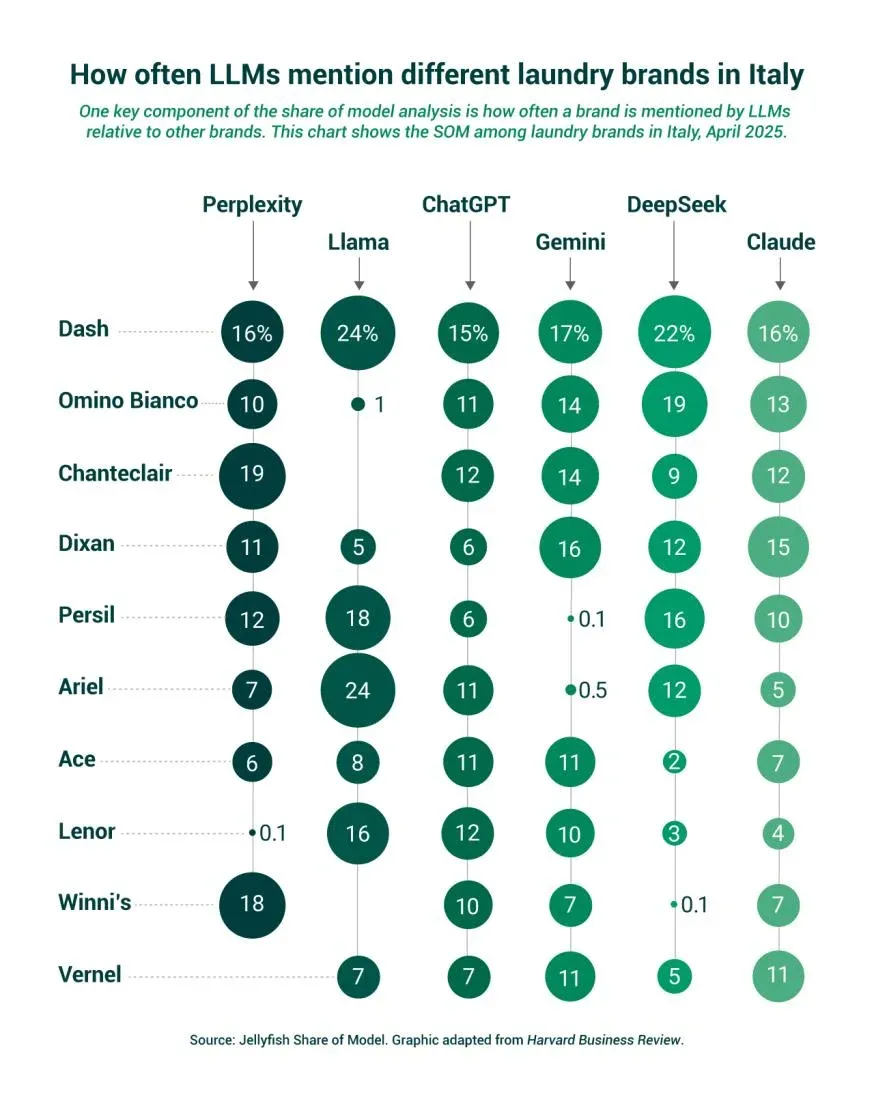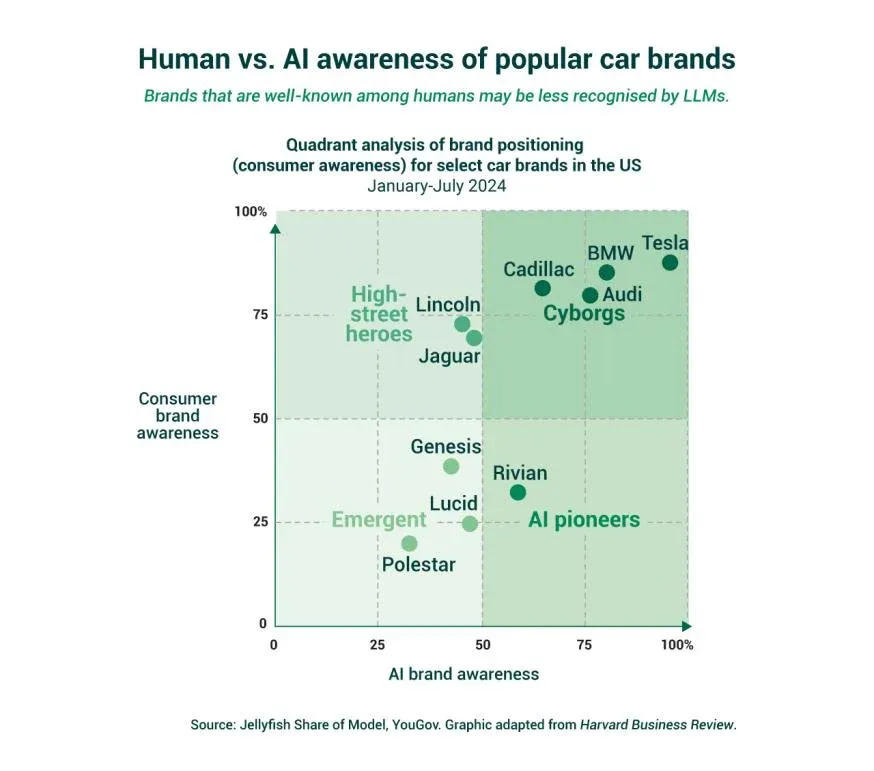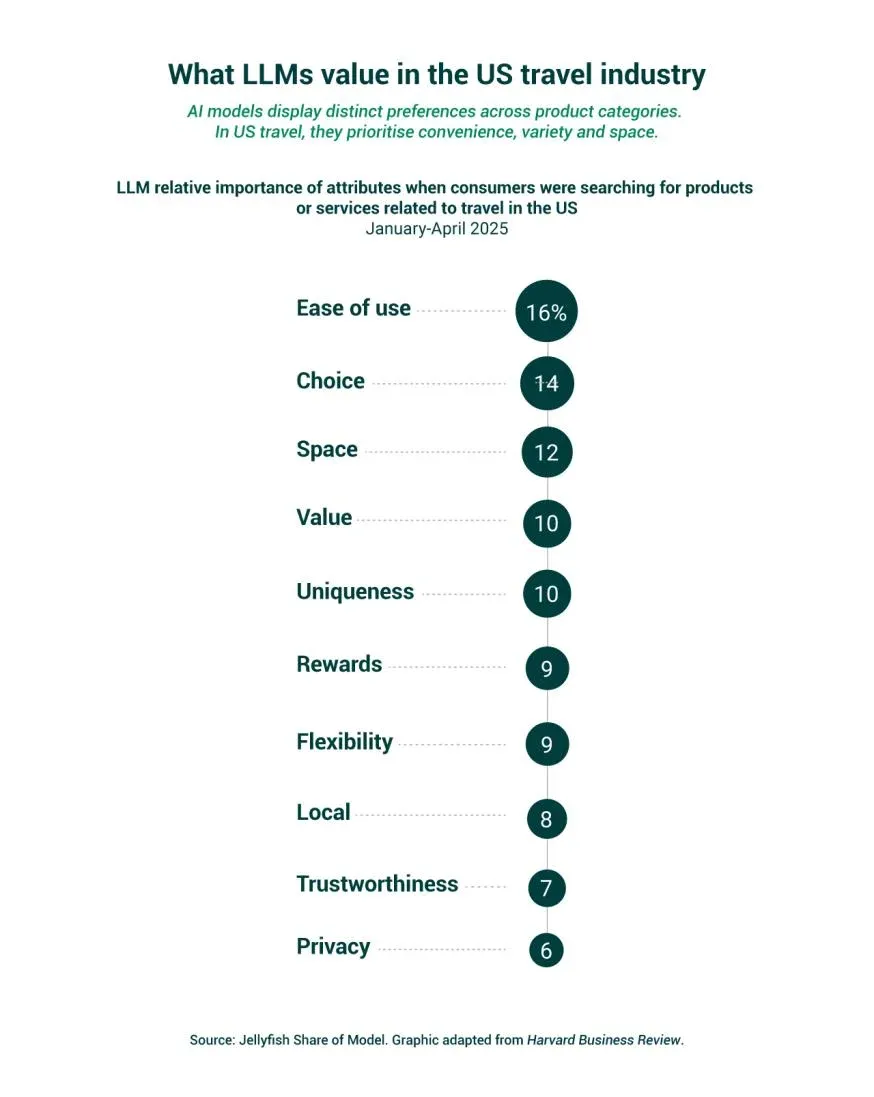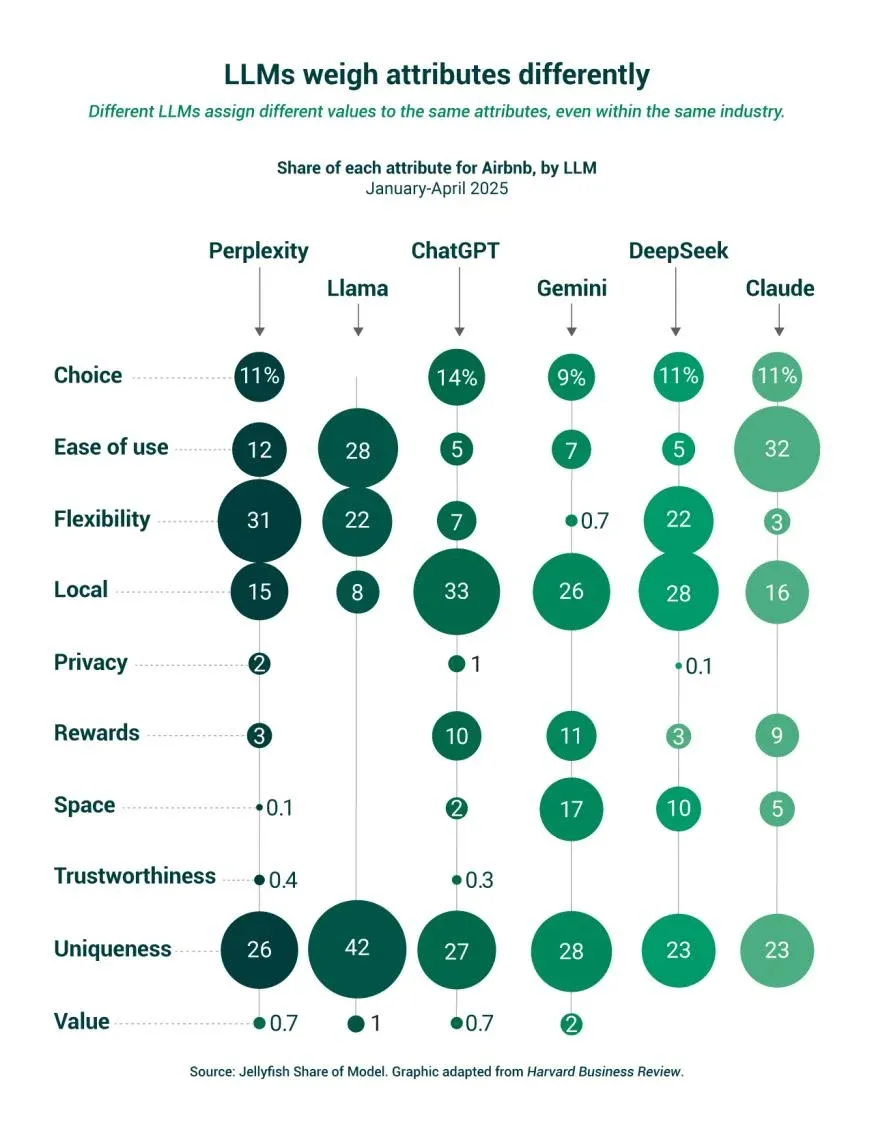How to Market to LLMs (and Sell to Humans)

Rawpixel.com from Freepik
Once upon a time, the customer journey involved typing on a search engine, then scrolling and clicking through the results. Now, instead of just typing "best coffee machines", consumers turn to ChatGPT or Gemini: "What's the best coffee machine under $200 for someone who drinks two cups daily?" Instead of being given lengthy lists of hyperlinks to websites of decreasing relevance, they get selected recommendations curated by large language models (LLMs).
The consumers’ path to product discovery and evaluation is dramatically changing, with LLMs gaining control over brands’ access to consumers. In a survey published in January, 58 percent of consumers said they now turn to generative AI tools for product recommendations, up from just 25 percent in 2023. During last year's holiday season, AI search referrals to United States retail sites surged by 1,300 percent.
What this means is that brands must rapidly tweak their marketing strategy playbook to adapt, as we explained in a recent Harvard Business Review article. Traditional brand awareness metrics – such as recall surveys, search volumes and social media mentions – that help brands gauge their visibility in terms of share of search and share of voice are not enough. Enter "Share of Model" (SOM), a concept that measures how often, prominently and favourably brands appear in AI-generated responses.
Related: Labubu, Stanley, and Matcha Hype: Lessons on Consumer Behavior

A metric that matters
Brand visibility on LLMs differs from traditional awareness on a critical dimension: While search engines still display less popular brands on later pages, AI models are merciless. If your brand doesn't register with an AI model, it simply won’t appear at all.
To “survey” LLMs, marketing agency Jellyfish, where two of this article’s co-authors work, has pioneered a proprietary methodology through large-scale AI prompting. This approach offers a three-pronged analysis: mention rate (how often brands appear), human-AI awareness gap (awareness disparities between consumer surveys and LLMs) and brand sentiment (how AI models perceive brand strengths and weaknesses).
Take for example Italy's laundry detergent market. We analysed the top brands’ mention rates among six LLMs using Jellyfish’s proprietary SOM platform.

Two findings stood out: First, brands’ SOM varies significantly across the models, reflecting differences in how LLMs process brand information. For instance, Ariel commands nearly 24 percent of mentions on Meta's Llama but less than 1 percent on Google's Gemini.
Second, some brands are totally absent from at least one model. Chanteclair, for example, enjoys a 19 percent SOM on Perplexity but disappears completely from Llama. There's no "page two" on LLMs.
The human-AI awareness gap
The relationship between traditional brand awareness and AI visibility is far from linear. Take the car industry, where our analysis reveals brands can belong to one of four distinct categories:

Cyborgs like Tesla and BMW maintain strong awareness among both humans and AI models. Tesla's success stems partly from Elon Musk's omnipresence but also from content that emphasises specific, measurable features – precisely what AI models value.
AI Pioneers such as electric vehicle start-up Rivian score high with AI models despite limited mainstream awareness. These brands typically focus on solution-oriented content that aligns with AI processing preferences.
High-Street Heroes including Lincoln and Jaguar enjoy strong human brand recognition but struggle with AI visibility. Their marketing conveys intangible qualities like elegance and heritage – attributes that don't resonate with current AI models.
Emergent brands like Polestar face the double challenge of low visibility among both humans and AI, risking digital irrelevance as AI-driven search becomes dominant.
Be precise and functional
The fundamental difference between human and AI preferences lies in optimisation priorities. While humans respond to attention-grabbing content, AI models optimise for resolution – they seek to solve specific problems. This distinction reshapes content strategy entirely.
Successful brands are abandoning broad marketing speak for precise, functional descriptions. Instead of "superb running shoes", winning brands specify "carbon-plated midsole design that improves performance for long-distance runners". Rather than aspirational messaging, they provide structured, educational content that demonstrates expertise.
Skincare brand The Ordinary, for example, created product pages featuring detailed ingredient explanations and science-backed content. And Nike combines customer-generated content from running communities with detailed product specifications for specific use cases like "marathon training shoes".
The pattern extends across industries. Traditional automotive brands pushing aspirational content lag Tesla and Rivian, which put forth measurable features such as battery life and software capabilities. Fast-fashion giant Shein, despite dominating social media, struggles with AI awareness due to undifferentiated content and lack of trust signals.
What brands should do
AI models display distinct preferences across product categories. When it comes to US travel, they prioritise convenience, variety and space above all else. On these criteria, Booking.com comes out tops.

Our analysis, however, reveals that Vrbo scores significantly higher than competitors on privacy and uniqueness – strengths the brand could leverage for AI optimisation.

Intriguingly, different AI models weight attributes differently even within the same industry. For Airbnb, Llama puts most weight on uniqueness, ChatGPT values local options, while Perplexity prioritises flexibility. Clearly, brands need nuanced strategies for different AI platforms.
Here’s how: Move from keyword optimisation to conceptual association, creating content that clearly links products to broader contexts and use cases. Multi-format approaches spanning text, images, videos and structured data perform best with AI models.
Brands should also create semantic niches or specific clusters of meaning where products naturally fit (e.g. like The Ordinary brands with skincare science). Plus: Invest in proving expertise through research citations, certifications and detailed explanations of how and why products work. Do “narrowcast” about pain points, including needs, questions and tasks. Don’t simply broadcast.

Legacy brands aren't doomed. Cadillac demonstrates how established companies can thrive by investing strategically in relevance and structured digital storytelling. The century-old automaker scores highly in both human and AI awareness through campaigns that emphasise innovation alongside heritage.
The challenge lies in optimisation without over-specialisation. Tailoring content to dominant AI models can drive visibility, but spreading efforts too thinly across platforms risks diluting impact. Smart brands are identifying which AI models best amplify their strengths while maintaining overarching solution-oriented messaging.
The road ahead
In short, a fundamental shift in consumer behaviour demands a paradigm shift in marketing approach: from persuasion to precision, from keywords to advice, from market share to problem-share.
Brands that master this transition position themselves as essential participants in the algorithmic conversations increasingly shaping consumer decisions. Those that don't risk becoming invisible in an AI-driven marketplace where LLMs are the gatekeepers to consumers.
Step Into the Room Where Leaders Grow
Collaborator Description:
This article is published courtesy of INSEAD Knowledge, the portal to the latest business insights and views of The Business School for the World. Copyright INSEAD 2025.
Edited by: Seok Hwai Lee
Business
David Dubois is an INSEAD Associate Professor of Marketing.
John Dawson is a Vice-President of Strategy at Jellyfish.
Akansh Jaiswal is a Senior Manager of Investment Analytics at Jellyfish.








